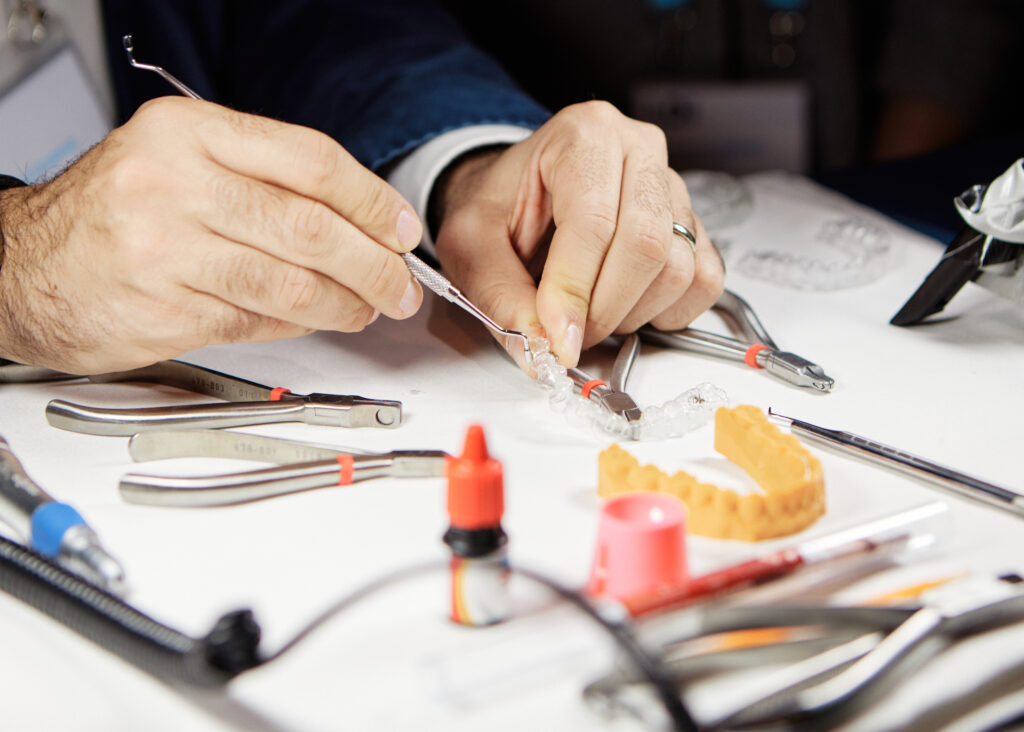Could your Invisalign™ treatment be leaching microplastics into your saliva? New research suggests that might be the case. In this blog, Dr. Jamal dives into a bitesize summary of everything you need to understand, plus links to further resources for your study.

A recent study investigated the in vivo elution of substances from Invisalign™ aligners and resin composite attachments. The study found elevated salivary levels of Bisphenol A (BPA) in patients treated with Invisalign and flowable resin composite attachments.
Our Summary
Bonded resin attachments have revolutionised Invisalign™ treatment by improving the control of tooth movement.
However, there is a concern that these resin attachments may leach potentially harmful compounds, such as BPA. BPA, a chemical commonly used in the production of plastics, has been linked to various health issues, including hormonal disruptions and increased risks of certain cancers.
In this study, 11 patients treated with aligners and attachments for an average of 20 months were enrolled. There were 16 attachments per patient, with no other composite restorations. Before the removal of the attachments, patients were asked to rinse their mouth with 50 ml of distilled water, and this rinsing solution was collected for analysis.
The attachments were then removed using low-speed tungsten carbide burs, followed by a thorough water rinse to remove any residue from the grinding process. After that, the patients were asked to rinse again, and this solution was also collected for analysis. The rinsing solutions before and after the removal of attachments were analysed for various leached compounds.
Advance your career by studying for a world-leading postgraduate diploma
Study at the cutting-edge of dental research with curricula taught by global experts and an online schedule that suits you.
Findings
The study found that the BPA concentration in the rinsing solution was four times higher before attachment removal than after removal. Some samples showed high variability of BPA concentration, possibly linked to the size, number, and duration of the attachments in the mouth.
This study suggests a possible link between the presence of composite attachments and release of BPA and other monomers in saliva.
The authors argue that the cumulative release of these harmful compounds might be higher than the amounts reported in the study and suggest the need for alternative resin materials for attachments.
Limitation: A small sample size of 11 patients.
About Dr. Jamal

Dr. Jamal Giri is an orthodontist and associate professor at B.P. Koirala Institute of Health Sciences in Nepal. He obtained his orthodontic training from the Institute of Medicine, Tribhuvan University, Nepal in 2014.
Currently pursuing a PhD at the University of Adelaide, he explores genetic and environmental factors in malocclusion development. Dr. Giri also holds a postgraduate certificate in clinical education from the University of Edinburgh and a master’s in medical education from the University of Nottingham.
Dr. Jamal teaches on the Diploma in Orthodontics and Dentofacial Orthopaedics at the LDi.
Read More
Stocker L, Zervou SK, Papageorgiou SN, Karakousoglou S, Triantis T, Hiskia A, Eliades G, Eliades T. Salivary levels of eluents during Invisalign™ treatment with attachments: an in vivo investigation. Progress in Orthodontics. 2024 Jun 3;25(1):22.
https://doi.org/10.1186/s40510-024-00522-6
Get Our Research Round-Ups in Your Inbox
Each month, we publish bitesize summaries of critical research to keep you updated with the latest advancements in dental science.
Subscribe below to stay ahead in your practice and enhance your knowledge with concise and informative summaries, delivered straight to your inbox.



